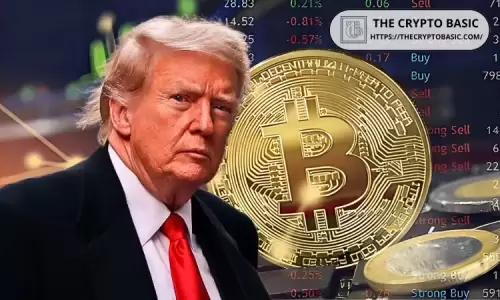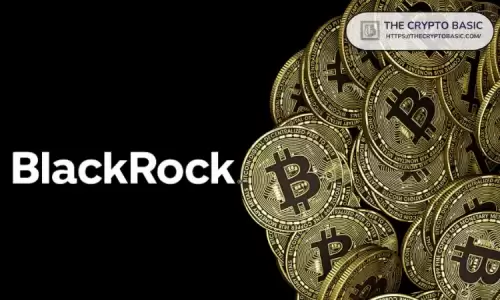 |
|
 |
|
 |
|
 |
|
 |
|
 |
|
 |
|
 |
|
 |
|
 |
|
 |
|
 |
|
 |
|
 |
|
 |
|
Articles d’actualité sur les crypto-monnaies
Exponential gas limit increase could boost Ethereum's scalability
Apr 29, 2025 at 12:26 am

Ethereum could see a massive scalability boost if a new Ethereum Improvement Proposal (EIP) is implemented. Ethereum Foundation researcher Dankrad Feist has introduced EIP-9698, which proposes a "deterministic gas limit growth schedule."
If accepted, this schedule would enable Ethereum's mainnet to increase its gas limit 100-fold over the next four years, potentially enabling the network to reach 2,000 transactions per second (TPS).
For context, Ethereum's mainnet currently processes about 10-20 transactions per second, while blockchains like Solana claim to achieve 6,000 TPS.
However, such high TPS often come with trade-offs, and achieving truly high throughput on a smart contract platform like Ethereum poses additional challenges.
Despite the complexities, EIP-9698 aims to streamline the process by embedding an automatic growth schedule in client defaults.
This contrasts with the current method of gas limit adjustments, which relies on miner or operator voting, often leading to unpredictable outcomes and stagnation.
Over two years, Feist's plan would gradually increase the gas limit from 36 million units to 3.6 billion units. A final tenfold boost would complete the process, significantly enhancing Ethereum's transaction throughput and positioning it to better compete with high-speed blockchains.
The exponential schedule with very gradual increments per epoch gives node operators and developers ample time to adapt and optimize.
Recently, @dankrad proposed EIP-9698, suggesting that Ethereum's block gas limit should gradually increase 100x over the next four years.
Summary:
- Activation is planned for starting around June 1, 2025.
- The initial gas limit will start at 50M and automatically grow by a... pic.twitter.com/perKtSJoXI
The first stage of the plan, targeting an eightfold gas limit increase, is set to begin at Beacon Chain epoch 369017, which is around June 1, 2025, with the Pectra upgrade.
The initial gas limit will be set at 50 million units, and each epoch will see an increase of 0.68 percent.
This plan has generated discussion within the Ethereum community. Some members see this move as a critical step toward improving base-layer scalability, complementing ongoing efforts to scale via Layer 2 solutions.
However, others have raised concerns about the potential stress on less-optimized nodes and increased block propagation times.
The Pectra upgrade is scheduled for release on the Ethereum mainnet in May 2025. Pectra will bring several enhancements aimed at improving network performance, security, and user experience.
While Pectra is not directly related to EIP-9698, it marks another important milestone in Ethereum's continuous evolution.
Following Pectra, developers are preparing for the Fusaka hard fork, which could come online in late 2025. Fusaka may include the implementation of EIP-9678, which proposes a fourfold increase to Ethereum's gas limit.
If realized, Fusaka would significantly contribute to Ethereum's scalability goals, further complementing the deterministic growth plan outlined in EIP-9698.
Together, these upgrades represent a multi-pronged strategy to ensure Ethereum remains competitive in an increasingly crowded blockchain landscape.
According to the latest algorithmic Ethereum price prediction from CoinCodex, ETH is projected to reach $3,100 by late 2025.
This would represent an impressive 76% increase compared to Ethereum's current price. However, the forecast also highlights potential near- to medium-term volatility.
CoinCodex predicts that ETH could drop to as low as $1,220 before regaining its upward momentum. Such a move would equate to a 30% decrease from the current price levels.
These predictions underscore the often volatile nature of cryptocurrency markets. While Ethereum's long-term outlook appears promising, especially in light of upcoming scalability improvements and protocol upgrades, investors should remain cautious and consider the inherent risks associated with digital assets.
Clause de non-responsabilité:info@kdj.com
Les informations fournies ne constituent pas des conseils commerciaux. kdj.com n’assume aucune responsabilité pour les investissements effectués sur la base des informations fournies dans cet article. Les crypto-monnaies sont très volatiles et il est fortement recommandé d’investir avec prudence après une recherche approfondie!
Si vous pensez que le contenu utilisé sur ce site Web porte atteinte à vos droits d’auteur, veuillez nous contacter immédiatement (info@kdj.com) et nous le supprimerons dans les plus brefs délais.
-

- Bitcoin (BTC) Le rallye des prix enflamme la demande de stocks de cryptographie
- May 29, 2025 at 11:15 pm
- Cet article répertorie certaines des meilleures actions de crypto qui ont récemment connu une augmentation de la popularité alors que les investisseurs se sont précipités pour garantir une part du récent rallye de Bitcoin.
-

-

-

-

- Michaël van de Poppe reste imperturbable par le récent accident du marché, prédisant ce moment de panique
- May 29, 2025 at 11:05 pm
- Le vétéran du marché populaire Michaël van de Poppe reste inébranlable par la récente correction du marché, prédisant que ce moment de panique fournirait bientôt des rendements massifs.
-

- BlackRock Ishares Bitcoin Trust ETF (IBIT) est en tête de tous les ETF cotés aux États-Unis dans les entrées quotidiennes
- May 29, 2025 at 11:05 pm
- Le 22 mai, le BlackRock Ishares Bitcoin Trust ETF (IBIT) a dépassé tous les fonds négociés en échange cotés aux États-Unis dans les entrées quotidiennes pour la première fois
-

-

-



























































